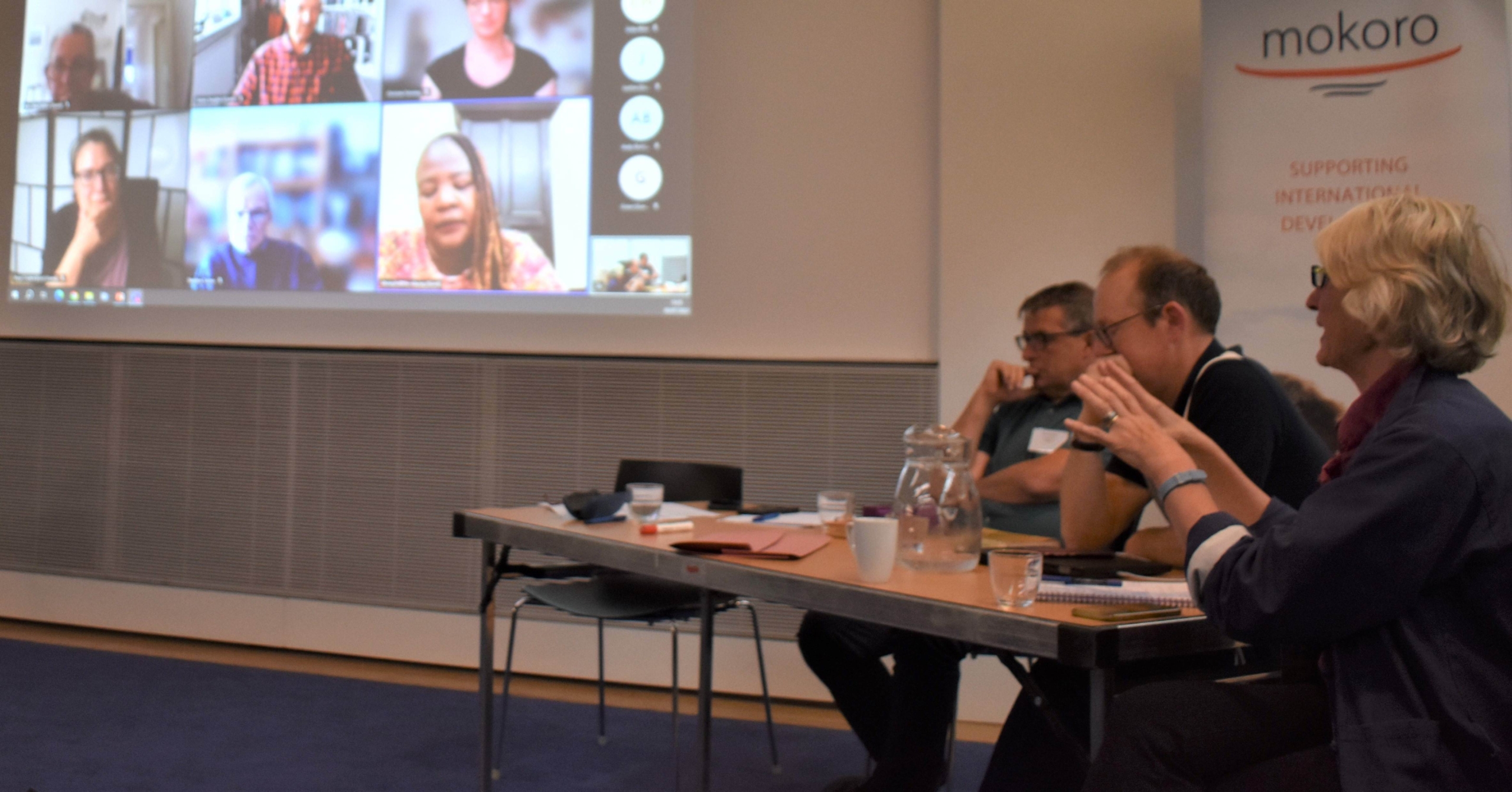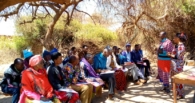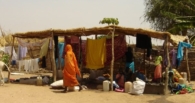WFP School Feeding Evaluation
Bangladesh, Lao PDR, and Nepal
Christine Fenning
19 July 2017
/
- 0 Comments
School feeding has been part of the global portfolio of the World Food Programme (WFP) for the last 45 years. Through its long-term engagement in this area the agency has become a leading player worldwide. The programme is implemented under Strategic Objective 4 of WFP’s Strategic Plan 2014-2017, to “reduce undernutrition and break the intergenerational cycle of hunger”. WFP introduced a School Feeding Policy in 2009 – evaluated by Mokoro in 2011 – which was revised in 2013 and which states that “while continuing to advocate for the universal adoption of school feeding programmes that help increase children’s access to learning opportunities and improve their health and nutrition status, WFP will focus increasingly on helping countries to establish and maintain nationally owned programmes linked to local agricultural production.” The revised School Feeding Policy recognises the complexity of school feeding and reflects this in its theory of change, depicted in Figure 1 below.

Figure 1: Theory of change for school feeding (WFP School Feeding Policy, 2013)
According to the theory of change, school feeding contributes in the long run to improved food security and resilience to food shocks. Capacity building, along with service delivery, is included as an important aspect for achieving the long-term goals. Educational attainment is not seen as a primary objective of school feeding, but rather school feeding is seen as a component of social protection and a potential contributor to increased attendance, enrolment and retention, in addition to improved nutrition and health. Importantly, WFP is increasingly seeking to help countries develop and run their own sustainable school feeding programmes.
One of the main funders of WFP’s school feeding is the United States Department for Agriculture (USDA) through the McGovern-Dole Food for Education Program. McGovern-Dole funding is predominantly supplied through in-kind support, with some cash support for administration and capacity building, and its intervention logic focuses on learning outcomes, health and nutrition, as well as foundational results that reflect WFP’s emphasis on capacity development for sustainable school feeding programmes.
In mid-2016, and as part of the McGovern-Dole funding requirements, WFP commissioned mid-term evaluations for its school feeding programmes in Bangladesh, Lao PDR, and Nepal. Following an inception meeting with WFP Regional Bureau for Asia and Pacific in Bangkok, the evaluation missions were conducted almost simultaneously in November/December 2016 by three Mokoro teams. Whilst the findings from the three countries yielded three separate reports, they also informed one synthesis presentation, including a discussion on lessons learned and recommendations. The following four key questions guided the evaluation:
- Key Question 1: How appropriate is the operation?
- Key Question 2: What are the results of the operation?
- Key Question 3: What factors have affected the result?
- Key Question 4: To what extent does the intervention’s implementation strategy include considerations for sustainability?
When considering the validity of the (implicit) theory of change and assumptions of the school feeding programmes in Bangladesh, Lao PDR and Nepal, the teams were mindful of the objectives and outcomes that can be expected to be associated with school feeding, as set out in WFP’s global school feeding policy (see Figure 1 above). The components of WFP’s global theory of change were reflected to varying degrees in the school feeding programmes of the three countries, and school feeding modalities across the three countries also varied, as shown in Table 1.
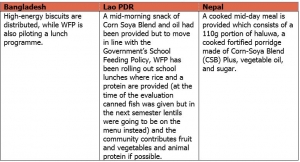
Table 1: School feeding modalities in Bangladesh, Lao PDR and Nepal
WFP is considering other modalities, such as providing cash or vouchers to schools where contextually feasible instead of in-kind donations, to overcome potential issues around diet appropriateness and to move towards more efficient and sustainable operations.
To implement some of the activities that are traditionally outside of WFP’s mandate, WFP has fostered partnerships with (national) NGOs, such as Big Brother Mouse in Lao PDR, BRAC and RDRS, two of the largest NGOs in Bangladesh, and Open Learning Exchange Nepal, to support literacy activities. WFP also coordinates to varying degrees with UNICEF to provide water and sanitation facilities in schools. Whilst these complementary activities are important to facilitating the impact pathways associated with the theory of change, this integrated approach brings new challenges of competence and coordination to WFP and USDA – would it be simpler for them to stick to school feeding itself while ensuring that the complementary activities are done by other agencies?
Given the foundational results, WFP’s relationship with governments from national to district/local level is key. Supporting government activities and developing the capacity of government structures is something WFP has corporately become more engaged in since its strategic shift away from food aid towards food assistance. However, it was evident, particularly at sub-national level, that WFP’s own human resource profile was still trying to catch up with this strategic shift. The evaluation found that the current monitoring and evaluation systems in all three countries are overly burdensome and recommends that WFP and USDA address this together. Monitoring fewer indicators but doing more systematic analysis would improve reporting on these programmes and strengthen lesson-learning. Streamlining can also be an important contribution to sustainability – which depends on successful hand-over.
In line with WFP’s Gender Policy (2015), the Terms of Reference for this evaluation required that gender equality and the empowerment of women (GEEW) should be mainstreamed throughout. The evaluation acknowledged the necessity of checking on the programme’s coherence with national policies on gender and asked whether the operation’s strategies were based on a sound gender analysis that considered the distinct needs and participation of boys and girls (and as appropriate within the context of the school meals programme, women and men). It also examined whether indicators for outputs and outcomes were sex-disaggregated and how adequately the operation has addressed gender equality and protection issues. In general efforts were being made to ensure gender-sensitivity across the programmes such as aligning with Gender Policies and removing gender disparities, and there was evidence of gender analysis in most countries. However, further progress can be made in improving the gender-sensitivity of some of the complementary activities.
Findings across the three countries varied, but a few common ones emerged. Generally, all three school feeding programmes were valued and valuable; the quality of many partnerships with government at various levels and with strategic and implementing partners was positive and appreciated; WFP’s effort to support the governments in policy making and strategic planning in an effort to hand over the school feeding programmes completely was evident. However, the programmes’ monitoring and reporting systems were overly cumbersome and in need of revision, and the programmes’ achievements were complicated by the emphasis on learning outcomes and the complementary activities that this focus required.
WFP has played a valuable role in working with the respective governments towards sustainable school feeding approaches and modalities, despite the fact that the agency itself is limited to an international in-kind modality that does not seem consistent with nationally owned and funded school feeding programmes in the long run. Therefore, the main challenge for all stakeholders – WFP, USDA and the respective governments – is to work towards school feeding programmes that can be successfully adapted for long-term sustainability.
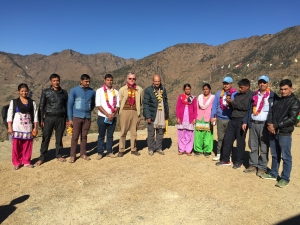
The Mokoro team in Nepal. Stephen Turner
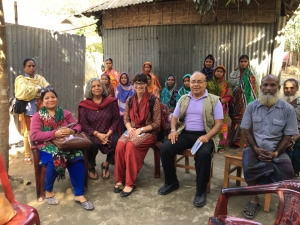
The Mokoro team in Bangladesh. Christine Berger
Read more about the project here
Or read the country reports; Bangladesh, Lao PDR and Nepal
You must be logged in to post a comment.

